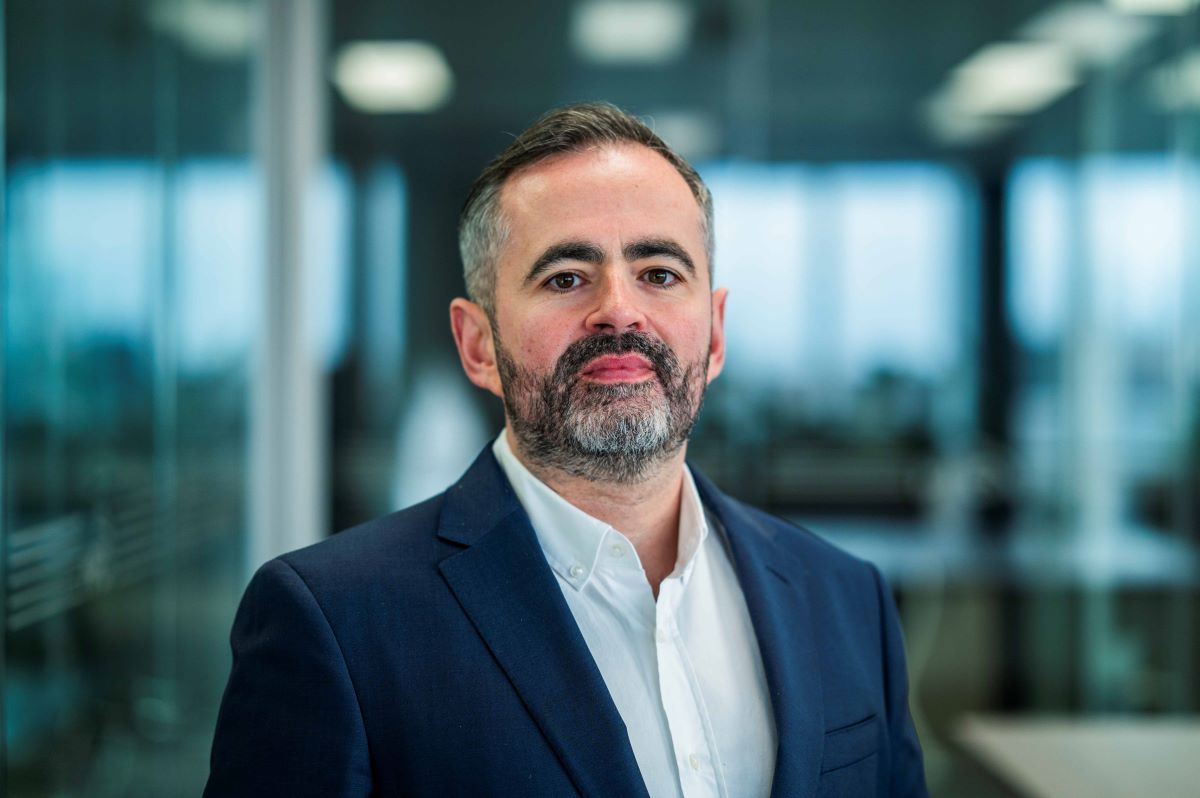Features
Data Centres
Features
News
Feature - Overcoming the DCI deluge
Tim Doiron, VP Solution Marketing, Infinera, looks at the ways of overcoming the DCI deluge in the era of artificial intelligence and machine learning.
In the Merriam-Webster dictionary, deluge is defined as “an overwhelming amount.” In recent discussions with communication service providers and internet content providers (ICPs), data centre interconnect (DCI) traffic growth is running hot at 50% or more per annum. Any traffic that doubles in less than two years surely qualifies as a deluge, so yes, DCI traffic is a deluge.
But is DCI’s accelerated growth driven by artificial intelligence (AI) and machine learning (ML)? The short answer is yes, some of it is – but we are still in the early days of AI/ML, and in particular, generative AI. AI/ML’s contribution to DCI traffic will increase with time. With more applications, more people taking advantage of AI/ML capabilities (think about medical imaging analysis for disease detection), and generative AI creating new images and videos (consider collaboration with artists or marketing/branding), the north-south traffic to/from data centres will continue to grow.
And we know that data centres don’t exist in a vacuum. They need connectivity with other data centres – data centres that are increasingly modular and distributed to reduce their impact on local real estate and power grids and to be closer to end users for latency-sensitive applications. One estimate from several years ago holds that 9% of all data centre traffic is east-west – meaning DCI or connectivity to other data centres. Even if this percentage is high for today’s data centres, with more data centres coming online and more AI/ML traffic to/from data centres, Al/ML will help DCI sustain its hot growth rate for years to come.
So, how do we address increasing data centre modularity and distribution while also supporting the DCI deluge that is already here and will be sustained in part by accelerating AI/ML utilisation? The answer is threefold: speed up, spread out, and stack it.
Speed up with terabit waves
Today’s 800G embedded optical engines are moving into the terabit era with the development of 1.2+ Tb/s engines that can transmit 1.2 Tb/s wavelengths hundreds of kilometres and 800G waves up to 3,000 kilometres. Data centre operators that lease fibre can utilise embedded optical engines with high spectral efficiency to maximise data transmission over a single fibre pair and thus avoid the incremental costs associated with leasing incremental fibres.
While 400G ZR coherent pluggables are increasingly common in metro DCI applications, 800G coherent pluggables are under development for delivery in early 2025. This latest generation of coherent pluggables based upon 3-nm digital signal processor technology expands capacity-reach significantly with the ability to deliver 800G wavelengths up to 2,000 kilometres. With such capabilities in small QSFP-DD or OSFP packages, IP over DWDM (IPoDWDM) will continue to be realised in some DCI applications, with pluggables deployed directly into routers and switches.
Spread out with Super C
With advancements in optical line system components like amplifiers and wavelength-selective switches, we can now cost-effectively increase the optical fibre transmission spectrum from 4.8 THz to 6.1 THz to create Super C transmission. With Super C we can realise 27% incremental spectrum enabling up to 50 Tb/s transmission capacity per band. A similar approach can be applied to creating a Super L transmission band. Super C and Super L transmission are cost-effective ways to squeeze more out of existing fibre and to keep up with DCI capacity demands.
Spread out with Super C-band spectrum evolution
Super C expansion also benefits coherent pluggables in DCI deployments by reclaiming any reduction in total fibre capacity due to the lower spectral efficiency of pluggables. Combining coherent pluggables with Super C enables network operators to leverage the smaller space and power utilisation benefits of pluggables without sacrificing total fibre transmission capacity.
Stack it with compact modularity
Today’s next-generation compact modular optical platforms support mix-and-match optical line system functionality and embedded and pluggable optical engines. Network operators can start with a single 1RU, 2RU, or 3RU chassis and stack them as needed, matching cost to capacity while minimising complexity. By supporting both line system and optical engine functionality in a common platform, network operators can cost-effectively support small, medium, and large DCI capacity requirements while minimising the amount of equipment required versus dedicated per-function alternatives. As capacity demand grows, additional pluggables, sleds, and chassis can be easily added – all managed as a single network entity for operational simplicity.
Stack it with a compact modular platform
Bringing it all together
While modest today, AI/ML-related DCI traffic will continue to grow – and help buoy an already hot DCI market. To accommodate the rapid connectivity growth between data centres, we will need to continue to innovate with pluggable and embedded optical engines that deliver more capacity with less power and a smaller footprint; with more transmission spectrum on the fibre; and with modular, stackable optical platforms. Commercially available generative AI applications like ChatGPT launched less than two years ago. We are literally just getting started. Hold on tight and grab an optical transmission partner that’s laser focused on what’s next.
For more from Infinera, click here.
Simon Rowley - 4 October 2024
Data Centre Operations: Optimising Infrastructure for Performance and Reliability
Enterprise Network Infrastructure: Design, Performance & Security
News in Cloud Computing & Data Storage
Nasuni integrates Microsoft 365 Copilot
Nasuni, an enterprise data platform for hybrid cloud environments, has announced its latest advancement in data intelligence by further integrating with Microsoft 365 Copilot. Through the Microsoft Graph Connector, Nasuni managed data is now fully accessible and operational with Microsoft Search and Microsoft 365 Copilot, significantly expanding data access for Microsoft's AI services.
AI requires AI-ready infrastructure, and today's legacy data storage infrastructure creates a challenge for forward-thinking enterprises. Legacy hardware-based storage generates silos of data, making it impossible to run AI and analytics against. Organisations, which can have billions of files and petabytes of data, need to break down these silos and consolidate their data into the cloud. The power to unlock this data is incredible, which is why the Nasuni File Data Platform enables this through data consolidation, protection and accessibility for anyone and anything (including AI).
The Graph Connector enables organisations to leverage Nasuni’s managed data repositories to harness the full potential of Microsoft 365 Copilot, aligning AI-powered experiences with specific business needs and workflows. Organisations can use the Graph Connector to leverage Nasuni data with Microsoft 365 semantic index to unlock AI-powered search, enhanced compliance, and advanced analytics through a unified interface.
Key benefits of this integration include:
· Unlocking greater value from data: Customers can now maximise the value of their Nasuni-managed data by making it accessible for personalised experiences via Microsoft 365 Copilot and Microsoft Search, enriching user interactions with relevant content.
· AI-powered search and insights: The Graph Connector enables Nasuni-managed files to be indexed into Microsoft's semantic index, which forms a key part of the Microsoft 365 AI infrastructure. This semantic index is utilised by Microsoft 365 Copilot and Microsoft Search to provide contextually relevant answers and insights across Microsoft 365 applications.
· A unified data interface: Customers benefit from single-pane-of-glass access to their Microsoft 365 data (including SharePoint and OneDrive) and Nasuni. This unified view allows for efficient searching and interaction with documents across the entire unstructured file stack, inclusive of Nasuni-managed data.
"By enabling Microsoft 365 Copilot through the use of the Microsoft Graph Connector, we're empowering our customers to get even more value out of their Nasuni-managed data," says Jim Liddle, Chief Innovation Officer of Data Intelligence and AI at Nasuni. "This solution integration will make it frictionless to use Microsoft 365 Copilot with Nasuni data in context with Microsoft 365 stored data sets, allowing for more informed decision-making and improved efficiency in our customers' day-to-day operations."
For more from Nasuni, click here.
Carly Weller - 25 September 2024
Data Centre Operations: Optimising Infrastructure for Performance and Reliability
Enterprise Network Infrastructure: Design, Performance & Security
News
News in Cloud Computing & Data Storage
VIAVI introduces VAMOS automation platform
VIAVI Solutions has introduced the VIAVI Automation Management and Orchestration System (VAMOS), an intelligent automation platform that incorporates AI/ML capabilities to enable wireless and cloud service providers, network equipment manufacturers and their ecosystems to reduce operational expenses and accelerate time-to-market.
The complexity of network architectures continues to increase, as operators and equipment manufacturers investigate the next generation of technology, migrate to the cloud, and leverage AI and ML. Continuous Testing (CT) becomes ever more prevalent to provide a unifying perspective on real-world performance. However, labs are confronting the dual challenges of more tests and limited headcount. Automation has become a crucial way for them to manage the complexity, scheduling and manpower demands of CT, allowing technicians to efficiently power through hundreds of test cases, and to focus on higher-order analysis and problem solving.
VIAVI has developed VAMOS as part of its NITRO Wireless portfolio to automate test campaigns and their execution in one centralised cloud-based, Lab-as-a-Service platform. Built-in AI and ML capabilities enable test optimisation and faster response times.
VAMOS’s customisable workspaces and configurations streamline the testing process across organisations and lab locations. Shared tool testbeds and individual sandboxes accommodate multiple test needs while the platform’s robust analytics and reporting help maximise test resource utilisation and boost test accuracy.
“As VIAVI works with leading labs around the globe to integrate wireless, cloud and AI, the need for automation and orchestration has never been clearer,” says Ian Langley, Senior Vice President, Wireless Business Unit, VIAVI. “In initial implementations at major labs, VAMOS has already demonstrated significant reductions in cost per test-hour and increases in hardware utilisation.”
In addition to providing a standalone solution to schedule and run test campaigns based on VIAVI’s NITRO Wireless portfolio, VAMOS can be integrated with a third-party automation framework, allowing it to interact with a wider range of products and existing test environments. Connection is available via both software and hardware.
VAMOS will be integrated into the VIAVI Automated Lab-as-a-Service for Open RAN (VALOR) for the lab’s on-demand, cloud-based testing. VALOR is designed to manage and support 5G and Open RAN deployments that would benefit from access to tools and expert staff with a minimal ramp-up time. The project is funded by the Public Wireless Supply Chain Innovation Fund.
For more from VIAVI Solutions, click here.
Simon Rowley - 16 September 2024
Data Centre Operations: Optimising Infrastructure for Performance and Reliability
Data Centres
Enterprise Network Infrastructure: Design, Performance & Security
News in Cloud Computing & Data Storage
Juniper revolutionises data centre assurance
Juniper Networks has announced several new and unique enhancements to its data centre assurance capabilities, driving exceptional user experiences through increased network visibility, analysis and automation.
The Juniper data centre networking solution now incorporates new cloud-hosted services that leverage AI for networking to deliver enhanced insights into application behaviours, both traditional and emerging AI workloads, for ongoing optimisation and rapid troubleshooting. In addition, Juniper has added new capabilities for analysing and validating data centre operations plus even richer telemetry data which, alongside other data centre assurance capabilities, help to reduce deployment times by up to 85% and cut OPEX costs by up to 90% in some instances.
Juniper’s data centre networking solution consists of QFX Series Switches, EX Series Switches, PTX Series Routers, ACX Series Routers and high performance SRX Series Firewalls managed via Juniper Apstra data centre assurance software and the Marvis Virtual Network Assistant (VNA). As a key part of the Juniper AI-Native Networking Platform, the solution leverages the right data to deliver the right real-time responses for highly reliable data centre networking. This enables unique capabilities, such as multivendor intent-based networking and switch management, proactive AIOps and a GenAI conversational interface for knowledgebase queries. From traditional data centres to new data centres for AI training, inference and storage clusters, Juniper combines exceptional performance with best-in-class flexibility and operational simplicity, plus switch management, proactive AIOps and a GenAI conversational interface for knowledgebase queries.
To simplify data centre operations and maximise network performance even further, Juniper has added new and unique software enhancements, which include:
New AI-Native cloud services that improve application visibility and assurance to optimise performance and lower mean-time-to-resolution (MTTR) Juniper is launching two new data centre cloud services, Service Awareness and Impact Analysis, to complement the Marvis VNA for Data Center AI-Native cloud service announced earlier this year.
Service Awareness leverages AIOps to add application and service data to the Juniper network knowledge graph, enabling greater application-to-network visibility. Service Awareness increases the understanding of where apps and services attach, how they communicate across the network, and what resources they consume, providing direct insights and supporting additional assurance capabilities such as Impact Analysis.
Impact Analysis builds on Service Awareness to enable faster troubleshooting and issue resolution and improved application assurance. AI/ML maps identified issues to impacts, providing a clear picture of which issues are responsible for applicationimpacts and which are unrelated. State comparison between different times improves identification and resolution of transient issues.
Service Awareness and Impact Analysis are now available in the Juniper Apstra Premium license tier at no extra charge. Marvis VNA for Data Center, the initial application in the Juniper Apstra Cloud Services suite, continues to be available in all three Juniper Apstra license tiers (Standard, Advanced, Premium) at no extra charge. All three data centre cloud services are built on Juniper’s microservices cloud architecture, which maximises scale, resiliency and performance.
Continued investment in intent-based networking improves the operator experience and further optimises application performance. The latest release of Juniper Apstra (version 5.0), which is a seamless upgrade for current users, builds on this leadership by adding over 100 new features focused on simplifying data centre operations even further.
For more from Juniper, click here.
Carly Weller - 12 September 2024
Data Centre Operations: Optimising Infrastructure for Performance and Reliability
Data Centres
Enterprise Network Infrastructure: Design, Performance & Security
News in Cloud Computing & Data Storage
Vertiv launches cloud-based fleet management
As AI workloads pivot to the network edge, the need for enhanced visibility at these remote data centre sites has become increasingly apparent. Recognising this, Vertiv has introduced Vertiv Environet Connect, a cloud-connected and web-based fleet management and monitoring solution. It features a device-agnostic interface that can handle diverse data centre infrastructure equipment across multiple locations, regardless of the manufacturer. Environet Connect is now available in Europe, Middle East and Africa (EMEA) and in North America.
Environet Connect speeds the deployment of remote Vertiv equipment and improves its health and efficiency through mass provisioning and firmware updates of network management cards. The system's monitoring capability enhances the oversight of critical infrastructure and provides customisable and configurable alarm notifications. Monitoring covers UPS systems, rack power distribution units (PDUs), generators, and thermal units.
"Edge deployments are growing rapidly and may soon be driven by real-world AI applications such as large language models, predictive analytics, and autonomous vehicles. Although these applications currently operate in data centres, they may quickly shift to the edge to reduce latency and avoid processing bottlenecks," says Wesley Lim, vice president of software and digital solutions for Vertiv. "Implementing a secure, user-friendly and web-accessible monitoring solution like Environet Connect would enhance operational visibility and maximise uptime for remote environments."
Environet Connect is accessible to direct customers and channel-managed service provider (MSP) partners. It accommodates all user types and is designed for multi-tenancy, simplifying the process for partners and customers.
Vertiv offers a series of services to enhance the Environet Connect user experience, with software training, customer help desk and asset management. The services include tiered levels, encompassing technical support, firmware updates, device provisioning and remote monitoring.
Vertiv recently announced its end-to-end portfolio for High-Performance Compute (HPC) and AI deployments, Vertiv 360AI. The solutions include power, cooling, enclosures, end-to-end lifecycle services and digitised management. Vertiv Environet Connect allows a common interface for the solutions within the AI ecosystem.
For more from Vertiv, click here.
Carly Weller - 10 September 2024
Data
Data Centre Operations: Optimising Infrastructure for Performance and Reliability
Enterprise Network Infrastructure: Design, Performance & Security
News
News in Cloud Computing & Data Storage
NetApp optimises VMware environments with new capabilities
NetApp, an intelligent data infrastructure company, has announced new capabilities that support VMware Cloud Foundation deployments. Mutual customers will be able to leverage NetApp solutions to right-size their IT environments to run VMware workloads at scale efficiently.
For more than a decade, NetApp and VMware have collaborated to ensure the success of their joint customers and to help them unlock the full value of their VMware investments. During that time, NetApp has been a key engineering design partner with VMware and is continuing to drive innovation in highly available, scalable and performant storage as a design partner for its Next-Generation vSphere Virtual Volumes (vVols). Now, NetApp is announcing new capabilities that will enable joint customers to run their VMware deployments more efficiently.
“NetApp and Broadcom are working together to take the uncertainty out of hybrid cloud environments,” explains Jonsi Stefansson, Senior Vice President and Chief Technology Officer at NetApp. “More than 20,000 customers rely on NetApp to support their VMware workloads. NetApp's continued close collaboration with Broadcom following the acquisition of VMware ensures our solutions seamlessly interoperate so our mutual customers can leverage a single intelligent data infrastructure to operate their VMware workloads more efficiently.”
NetApp is helping to optimise costs, simplify operations, and increase flexibility for customers running VMware environments by offering:
• Expanded support for VMware Cloud Foundation (VCF): NetApp and Broadcom customers will now be able to simplify their VCF hybrid cloud environments by using NetApp ONTAP software for all storage requirements, including standard and consolidated architectures. The latest release of ONTAP Tools for VMware (OTV) will support SnapMirror active sync to provide symmetric active-active data replication capabilities for NetApp storage systems running VMware workloads. SnapMirror active sync allows customers to operate more efficiently by offloading data protection from their virtualised compute and improving data availability.
• New capabilities for Azure VMware Solution (AVS): To support customers that are extending or migrating their vSphere workloads to the cloud, customers can now leverage Spot Eco by NetApp with AVS reserved instances to get the most value out of their deployments. Using Spot Eco to manage AVS reserved instances while also using Azure NetApp Files to offload data storage can reduce compute costs significantly.
• Enhanced VM Optimisation features for NetApp Cloud Insights: NetApp is introducing Cloud Insights VM Optimisation, expanding its comprehensive solution for optimising virtual environments, including VMware. Cloud Insights VM Optimisation will give customers tools to reduce costs by increasing VM density, run storage at the best price-to-performance ratio for their environment, and monitor their entire environment to ensure availability, performance, and adherence to configuration best practices across the entire stack. To help customers optimise the compute, memory and storage resources of their VMware environments, NetApp is also offering customers a free 30-day trial of Cloud Insights to most cost-effectively migrate to the new VMware software subscriptions.
These offerings follow last month’s release of enhancements to NetApp BlueXP disaster recovery service, which provides guided workflows to design and execute automated disaster recovery plans for VMware workloads across hybrid cloud environments with newly added support for VMFS datastores.
“As organisations modernise infrastructure with VMware Cloud Foundation, they want to know that the services upon which they rely from industry-leaders such as NetApp will continue to work seamlessly and deliver the value they have come to expect,” says Paul Turner, Vice President of Products, VCF Division at Broadcom.
“Having NetApp as a close collaborator helps our mutual customers deploy innovative data and storage services on top of their private cloud platform, and ensure they are getting the most value out of their VMware environments.”
“We have made Microsoft Azure the cloud of choice for VMware environments, and offer fast and cost-effective solutions enabling many customers to move their VMware workloads to the cloud,” says Brett Tanzer, Vice President of Product Management at Microsoft. “As VMware customers navigate changes to operating virtualised environments, we have given our customers a way to lock in secure and predictable pricing over multiple years. NetApp's data management and cloud observability capabilities help our customers ensure those deployments are delivering the return on investment they need.”
“In an ever more complicated world of cloud, data, and infrastructure operations, IT teams are increasingly looking for holistic platforms over point solutions,” notes Scott Sinclair, Practice Director, Enterprise Strategy Group. “These joint updates from NetApp and Broadcom enable customers to use NetApp’s intelligent data infrastructure to consolidate multiple data operations onto a single platform with industry-leading data management and CloudOps capabilities. That will help customers drive greater operational and infrastructure efficiencies that reduce the total cost of ownership for their VMware investments.”
For more from NetApp, click here.
Simon Rowley - 3 September 2024
Data Centre Operations: Optimising Infrastructure for Performance and Reliability
Enterprise Network Infrastructure: Design, Performance & Security
News
News in Cloud Computing & Data Storage
Sustainable Infrastructure: Building Resilient, Low-Carbon Projects
DataVita launches alternative to public cloud services
DataVita, Scotland’s largest data centre and cloud services provider, has launched National Cloud, a platform that addresses the challenges many organisations face when using the public cloud that supports the wider use of artificial intelligence (AI).
National Cloud is designed for workloads that don’t fit well into the traditional public cloud and it offers full transparency and predictability over costs – with no hidden fees or egress charges – removing the risk of the potentially infinite costs that come with existing pay-as-you-go public cloud models.
The service is delivered from some of the most sustainable data centres in the UK, offering the lowest digital emissions of any cloud provider in the country, DataVita claims. This also ensures data residency within the UK – whereas many public could operators use overseas facilities – addressing compliance and security concerns for public services and regulated industries.
Built on open architecture and interoperable systems, National Cloud allows integration and movement between different products which reduces vendor lock-in risks and enables hybrid cloud capabilities. It is purpose-built to handle complex workloads, supporting the requirements of medium and large enterprises, tech start-ups, and public sector organisations.
DataVita has forged a strategic partnership with Hewlett Packard Enterprise (HPE) to deliver the new platform, combining the agility of a specialised cloud provider with the robust technology, industry experience, and simplicity of an established market leader.
Danny Quinn, MD of DataVita (pictured above), says, "National Cloud is our answer to the recurring issues organisations face with public cloud services. We're actively seeking out workloads that public clouds can't efficiently support, particularly those driven by AI's growing demands and organisations requiring intricate hybrid cloud architectures. Our platform offers the performance, security, and scalability needed for these intensive applications, all while providing cost predictability and sustainability.
"Available across the UK, we're already seeing significant interest from organisations looking to escape the limitations of public cloud services and gain more control over their critical workloads and data. Our focus on transparency, sustainability, and expertly tailored solutions sets us apart in the market."
Xavier Poisson, Global Vice President for Service Providers & Colocation Providers at HPE, adds, “The National Cloud combines HPE GreenLake cloud’s leading capabilities to manage, observe, automate and secure complex cloud environments, with DataVita’s experience as a leading provider of cloud and connectivity services. With this new platform, customers across the UK will have access to a trusted infrastructure that allows them to stay in full control of their data and derive value from it.”
For more from DataVita, click here.
Simon Rowley - 29 August 2024
Exclusive
Features
News
Sustainable Infrastructure: Building Resilient, Low-Carbon Projects
Feature - Data centre growth requires sustainable thinking
The development of AI is having a huge impact on almost every industry, and none more so than within data centres. It is expected that global data centre electricity demand will have doubled by 2026 due to the growth in AI. So, how do we ensure our data centres are operating as efficiently as possible? Russell Dailey, Global Business Development Manager, Data Centres at Distech Controls, explains.
We are generating more and more data in all aspects of lives, whether that’s through our business operations, the use of social media and even our shopping habits with the growth of e-commerce.
Our new dependence on web services and digital infrastructure requires a greater number of data centres, and we need them to operate more reliably and efficiently than ever before.
According to the International Energy Agency (IEA), in 2022, data centres used 460 terawatt hours of electricity, and it expects this figure to double in just four years. Data centres could be using a total of 1,000 terawatt hours annually by 2026.
This demand for electricity has a lot to do with the growth in AI technology. In a similar way to how the growth of e-commerce drove uptake for large industrial warehouses, AI is expected to more than double the need for global data centre storage capacity by 2027, according to JLL’s Data Centres 2024 Global Outlook.
As data centres contribute substantially to global electricity consumption, more facilities are seeking to adopt enhanced sustainability strategies. To achieve net zero emissions targets or other environmental objectives, data centre companies must invest heavily in energy efficiency measures. A Building Management System (BMS) can form the cornerstone of these efforts, providing insights into energy usage and helping to reduce unnecessary energy waste with enhanced operational efficiency.
Data centres are unique buildings, and a BMS within this environment requires careful planning and implementation.
Let’s be open
In the past, building systems have traditionally been proprietary and not flexible like open systems. Proprietary systems speak different languages, resulting in incomplete visibility, data, and reliability, and leave you tied to one, often expensive, service provider.
However, that is changing, and open systems are becoming ever more popular in commercial buildings and have numerous benefits for data centres.Systems offer monitoring and analytics at the local controller, reducing network complexity, increasing redundancy and security.
With Distech Controls, operators can keep their facility at optimal performance through a proven IP-based solution that creates a more secure and flexible network enabling easy integration of systems with a wide range of IT and business applications. Distech Controls’ commitment to open protocols and industry IT standards, combined with its best-in-breed technology, creates a sustainable foundation that supports and evolves with a building system’s life cycle.
Efficient and forward thinking
Open systems also have an effect on the sustainability of a data centre. They can bring everything together in a cohesive and centralized fashion allowing users to visualise information, assess relationships, establish benchmarks and then optimise energy efficiency accordingly.
Distech Controls’ solutions meet even the most demanding data centre control requirements (even remotely) via fully programmable controls and advanced graphical configuration capabilities. They leverage technology such as RESTful API, BACnet IP, connected controllers, and unified systems, to help future-ready your data centre as technology continues to advance.
The importance of security
The smarter buildings become, the greater the importance of cyber security. There are some fundamentals that building owners and system integrators need to consider when it comes to the security of their BMS.
As a starting point, the devices or operational technology (OT) should be on a different network to the IT system as they have separate security requirements and various people need to access them. As an example, contractors overseeing BMS devices do not need access to HR information. Each device should be locked down securely so they can only communicate in the way that is required. There should be no unnecessary inbound or outbound traffic from the devices. This links neatly to monitoring. It is vital to monitor the devices after installation and commissioning to ensure there is no untoward traffic to the devices that could threaten a buildings or company’s security.
Some manufacturers, such as, Distech Controls, are ensuring its products are secure straight out of the box. Security features are built directly into hardware and software like TLS 256- bit encryption, built-in HTTPS server and HTTPS certificates. For instance, the ECLYPSE APEX incorporates a secure boot and additional physical security measures to help overcome today’s security challenges.
Distech Controls’ solutions are specified by leading web service providers because of their high resiliency, flat IP system architecture and open protocol support. They also incorporate the right technologies to comply with the most stringent cybersecurity standards as well as RESTful API / MQTT for OT/IT interoperability purposes. These attributes allow data centre operators, integrators, and contractors the freedom to choose the best-in-class solutions for their data centre’s infrastructure management services. These advanced features enable significant operational efficiency improvements and energy cost reductions for data centre owners and managers.
AI technology is already having a revolutionary effect in business and our personal lives. At Distech Controls, we are utilising its capabilities, and it is clear that this revolution is going to require more data centres. We need to look at ways we can make these specialist buildings as efficient as possible. Utilising an intelligent and open BMS is essential.
Simon Rowley - 19 August 2024
Data Centre Operations: Optimising Infrastructure for Performance and Reliability
Edge Computing in Modern Data Centre Operations
Enterprise Network Infrastructure: Design, Performance & Security
News
News in Cloud Computing & Data Storage
Malaysia’s first 5G orchestration platform announced
Maxis has partnered with Singtel to introduce Malaysia's first all-in-one platform for 5G network, edge computing, cloud and services orchestration, built on Singtel’s Paragon for telco networks.
The platform will make 5G-Advanced (5G-A) and 5G technology, edge and multi-cloud computing more accessible to Malaysian businesses and accelerate digital transformation across various verticals such as manufacturing, logistics, healthcare and public services.
The partnership was formalised during the Malaysia Commercialisation Year (MCY) Summit 2024, an event organised by the Ministry of Science, Technology and Innovation (MOSTI) to drive the national commercialisation ecosystem. The Summit was officiated by Guest of Honour YAB Dato’ Seri Anwar Ibrahim, Prime Minister of Malaysia. The Memorandum of Understanding (MoU) exchange took place at the Maxis booth between Goh Seow Eng, CEO of Maxis, and Manoj Prasanna Kumar, Chief Technology Officer of Singtel Digital InfraCo.
Made available in Malaysia through Maxis’ enterprise arm, Maxis Business, the platform will enable ‘on-demand’ edge computing services, providing customers with access to low-latency computing, GPU as a Service (GPUaaS) and storage. With its multi-access edge computing (MEC) capabilities, data from end-users and devices can be processed at the edge. This, combined with Artificial Intelligence (AI), provides real-time processing and intelligent decision-making.
Paragon offers a powerful marketplace available to both Maxis customers and partners, making it easy for enterprises to create network slices on-demand and deploy mission-critical 5G applications on MEC – all with the click of a button.
Goh Seow Eng, CEO of Maxis, says, "Our collaboration addresses customer needs by providing a unified 5G platform that simplifies orchestration across network and cloud environments. The platform enables greater access, speed and flexibility for businesses to deploy and manage 5G and cloud computing solutions seamlessly.
"This will help them to focus on their core business, further strengthening their competitiveness globally. As the country’s leading integrated telco, we look forward to accelerating 5G-A and 5G adoption and the digitalisation of Malaysian businesses as the preferred digital business partner.”
Bill Chang, CEO of Singtel Digital InfraCo, adds, "We’ve seen a strong shift in demand from enterprises for 5G and edge computing capabilities to accelerate their digital transformation. Singtel has been leading the charge, forging various strategic partnerships with telcos globally with Paragon, being instrumental in this adoption.
"Paragon enables faster monetisation of 5G infrastructure by reducing complexities for telcos to deliver and scale 5G use cases. We are pleased to partner with Maxis to mutually expand and deepen the service opportunities of 5G and edge monetisation in Malaysia.”
The platform’s capabilities can benefit businesses through a wide range of enterprise applications across different verticals that require high-speed data processing, such as real-time analytics, mixed reality and autonomous systems. The platform will be locally hosted and deployed in Malaysia, to cater to the cybersecurity and data sovereignty requirements for Malaysian businesses.
Platforms built and powered by Paragon have now successfully been deployed in four ASEAN markets. With Maxis bringing the capability exclusively to Malaysia, multinational companies will be able to operate with ease, with a common experience and unified architecture across the region. The deployment is timely given Malaysia’s upcoming ASEAN chairmanship in 2025, where the nation will play a more active role leading the regional bloc’s economic and digital aspirations.
Maxis says that the partnership demonstrates its commitment to bringing innovation to the market and enabling Industry 4.0 transformation through real-world use cases. In addition to 5G and cloud-native solutions, this commitment includes leading the development of next generation solutions in Malaysia around AI and Generative AI, IoT, and 5G-advanced technology.
Singtel Paragon is a comprehensive solution that enables enterprises to connect with the 5G network and securely deploy their edge computing applications and services rapidly on the telco’s infrastructure, thus reducing time-to-market and shortening the innovation curve. Paragon will also lower the barriers for adopting MEC services, unlocking efficiency and business innovation for enterprises.
For more from Singtel, click here.
Simon Rowley - 14 August 2024
Data Centre Operations: Optimising Infrastructure for Performance and Reliability
Enterprise Network Infrastructure: Design, Performance & Security
News
News in Cloud Computing & Data Storage
RSM increases network resilience with Macquarie
Macquarie Telecom, part of Macquarie Technology Group, has signed an agreement with RSM Australia across both SD-WAN network and voice services.
The partnership first began in late 2019 amid a period of significant growth for RSM. From the implementation of cutting-edge SD-WAN technology across its 32 locations, with a significant presence in regional Australia, RSM has seen a remarkable transformation in network performance and user experience. This success drove RSM to extend the partnership to include SIP trunking in 2021 – the use of VoIP – to maintain telephone service across the large and far-flung organisation.
RSM, a global provider of accounting and professional services that was established over 100 years ago, realised its existing MPLS network was not the best solution to support its rapidly expanding business – particularly in terms of resiliency, capacity, and cost. The previous network, providing private connectivity between RSM’s locations and cloud, did not deliver the expected resiliency. This inadequacy, coupled with the high cost and challenging relationship with the previous provider, prompted RSM to seek a more reliable, cost-effective, and customer focused solution.
The company recognised the potential of SD-WAN technology to greatly improve network bandwidth and resiliency, and went to market for a partner to deliver this solution. Macquarie Telecom emerged as the top contender following a rigorous due diligence process, and the roll-out began in late 2019, just prior to the onset of the COVID-19 pandemic. “Despite the challenges posed by the pandemic, Macquarie Telecom’s proactive and responsive approach ensured the deployment continued smoothly,” says Andre Bracetti, IT Manager at RSM.
Deployment was completed by mid-2020, significantly enhancing RSM’s network performance and reliability as a result. This success was further highlighted by RSM’s recent decision to extend the partnership.
RSM’s commitment to reaching regional areas has been a key component in its decision to initially engage, and now extend the partnership, with Macquarie Telecom. According to Andre, a crucial part of the firm’s history and strategy is to be closer to its clients, particularly those in regional areas: “SD-WAN has completely transformed the service we can provide our clients, from Bunbury to Ballarat and everywhere in between. Previously, we faced limited bandwidth and frequent outages, especially in our regional offices. With the new technology, we’ve increased capacity and resiliency, reducing IT outages, and significantly improving network reliability.”
Previously, some of RSM’s regional offices had access to very limited bandwidth, which often led to poor user experiences. With SD-WAN, a secondary link was added to every location which not only improved capacity but also reliability, drastically improving user experience.
Client experience is a top priority for RSM, and Andre notes that Macquarie Telecom’s shared passion for customer experience made the partnership a perfect fit. He comments, “We have what we refer to as a ‘priority one’ event. This means any type of disruption that impacts multiple people in multiple locations. We chart the trends of priority one events over time and there is an obvious downturn in network outage events since Macquarie Telecom implemented SD-WAN. Even when we’re alerted to an issue, with the resiliency that Macquarie Telecom SD-WAN provides, there’s no impact on user experience.”
The partnership has allowed RSM to focus on strategic initiatives rather than managing network stability issues. This shift has enabled the team to concentrate on improving system performance, enhancing security, improving digital literacy, and supporting business acquisitions and office moves.
Andre continues, “The role of an ideal partner in innovation is important. We chose Macquarie Telecom because of its competitive edge and the reliability of service. This partnership has minimised distractions and allowed us to focus on strategic growth and client satisfaction.”
Aaron Tighe, Western Australia State Manager, Macquarie Telecom, adds, “RSM is deeply committed to maintaining world-class customer service. At Macquarie, we seek to make a difference in markets that are overcharged and underserved, with customer experience magic at the centre. It is a privilege to support RSM as the company excels in a challenging market.”
Looking ahead, RSM continues to prioritise innovation and expanding its regional reach, with a recent practice established in Gosford and others on the horizon. The partnership with Macquarie Telecom will play a crucial role in this journey, providing the technological foundation necessary to explore new opportunities and enhance service offerings.
For more from Macquarie, click here.
Simon Rowley - 14 August 2024

Head office & Accounts:
Suite 14, 6-8 Revenge Road, Lordswood
Kent ME5 8UD
T: +44 (0)1634 673163
F: +44 (0)1634 673173









